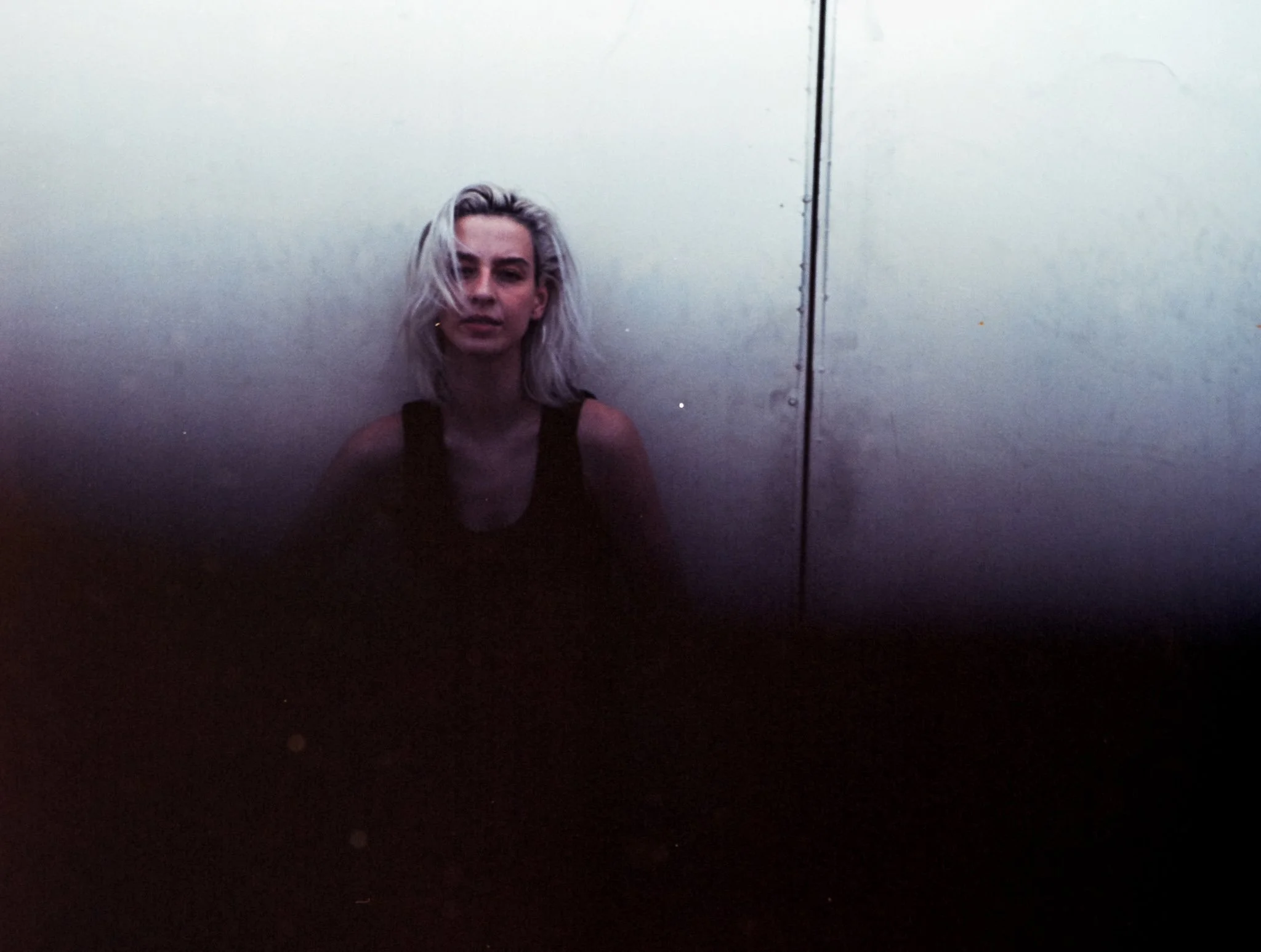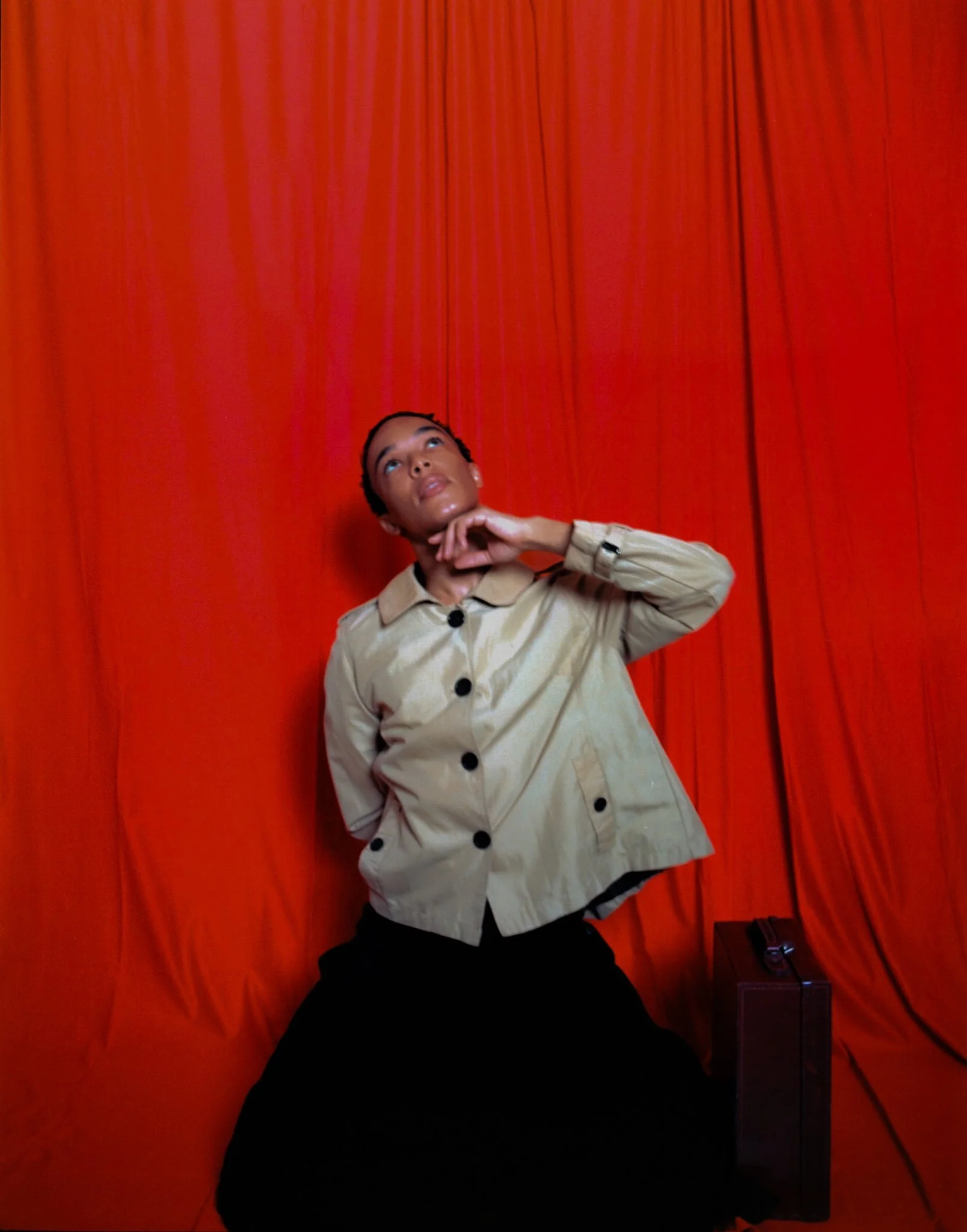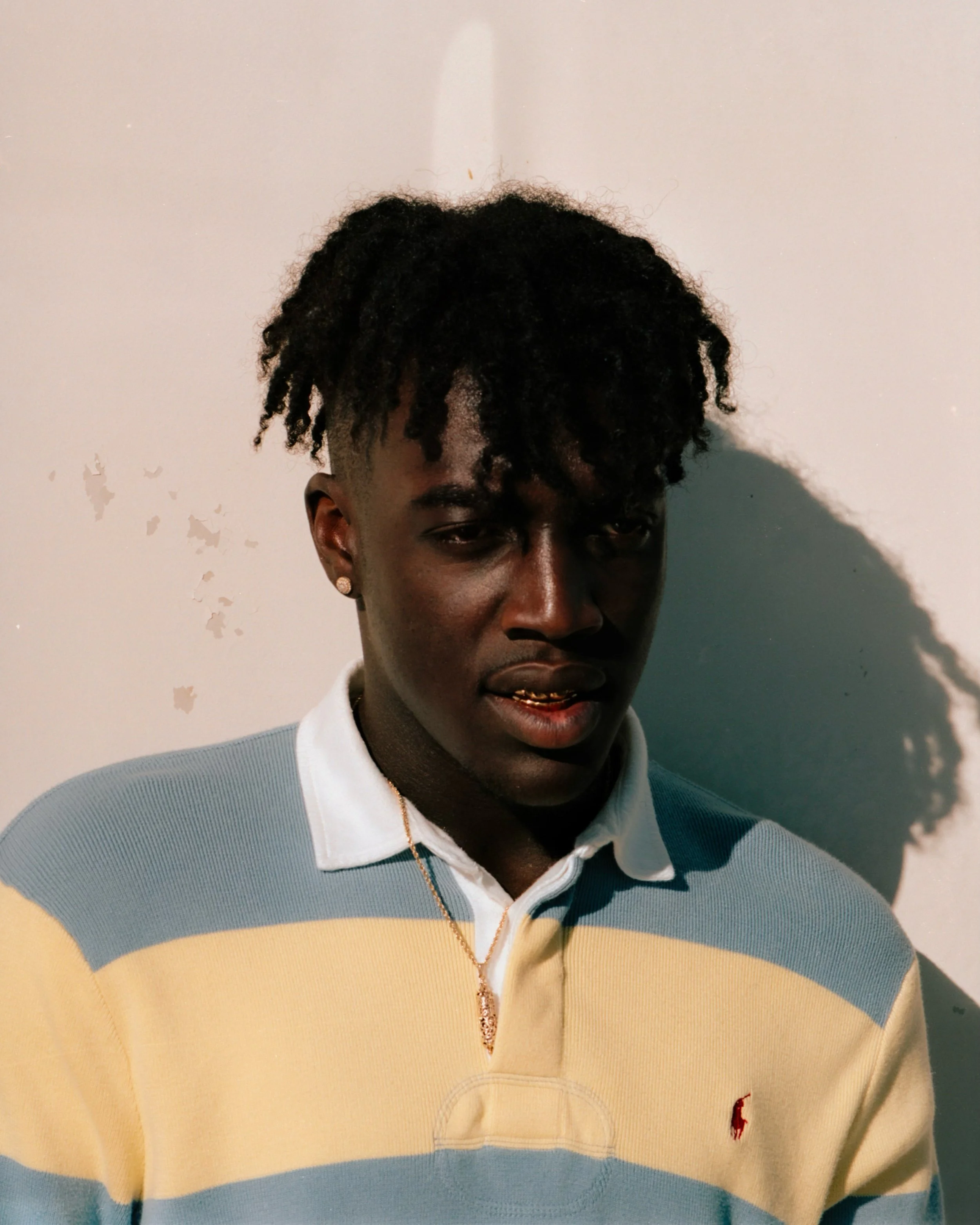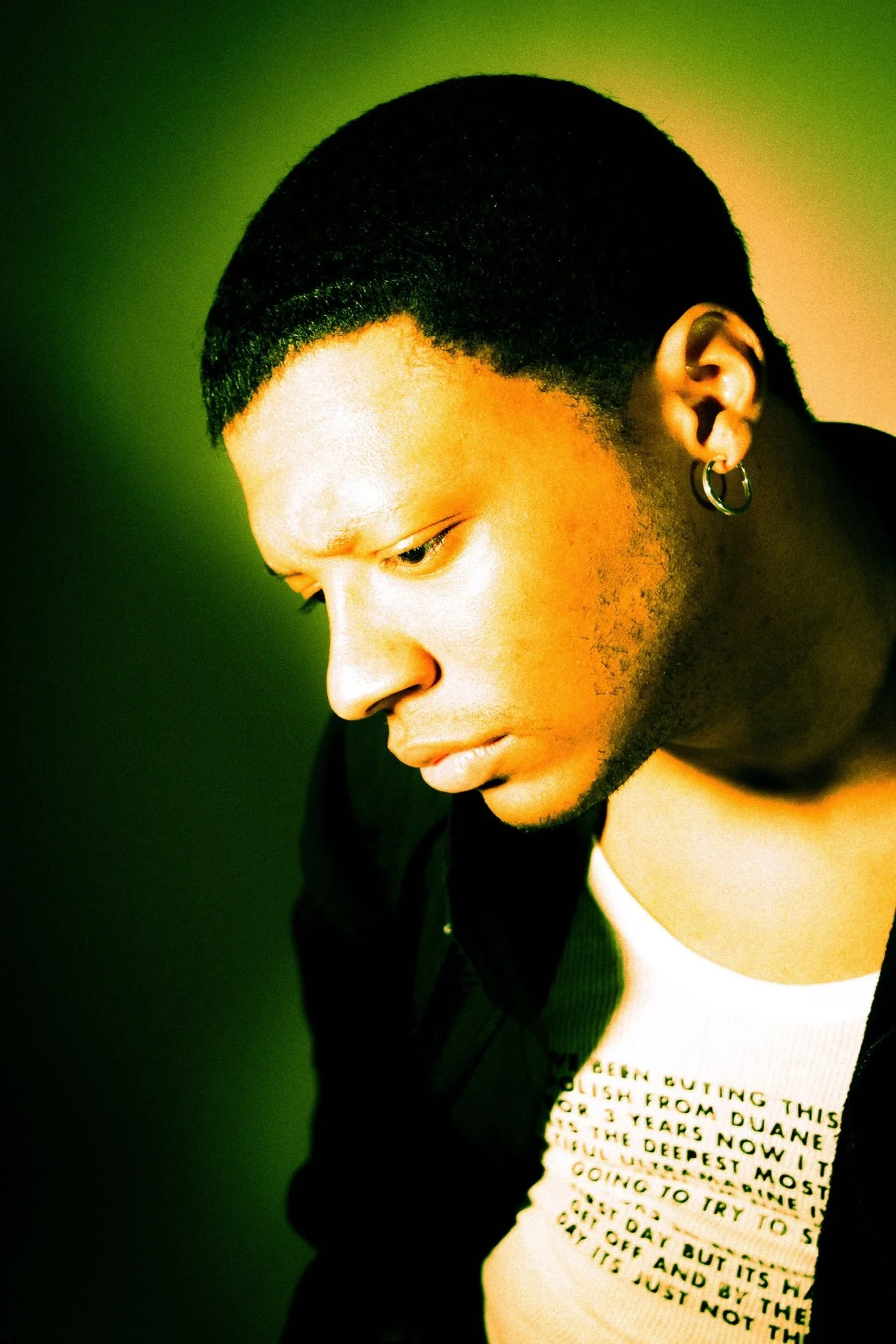The Youth Sees the World Clearer When it’s Shot on Film
By Olivier Lafontant
From the crux of Miami’s eclectic art scene, to the multimedia capital of the world in New York, film photography is alive and thriving.
Cover photo by Daren Calixte
At the time of Davide Sorrenti’s death in the winter of 1997, the 19-year-old Italian photographer was infamous for portraiture sopped in glaze and youthful stupor. Depicting strung out subjects on bare mattresses and cigarette-smoking skater kids, he landed placements on magazines like Interview and i-D. Lifelong complications from thalassemia, an advanced form of anemia, made his brief stint on Earth an emotional pendulum that directly translated to his varicolored portfolio.
Lurching from warm quips of human companionship to the feverish dejectedness that lingered in his ailing body, the mysticism of his work was made apparent on the tinge of 35mm film. Tiny chemical reactions yielding saturated hues and grainy veils atop Davide’s photos are products of film that have been foundational to his pathos. Over two decades since his death, his lasting impact sets a precedent for the young photographers of today.
West Palm Beach native Daren Calixte (@d____calixte) cites Sorrenti’s signature “heroin chic” aesthetic when discussing his inspiration as an up-and-coming photographer. Drawn in by Sorrenti’s sense of melancholic isolation, the 22-year-old’s work is reflective of the Italian’s. When a comparison is drawn between the two, Calixte, known to his peers by his initials, simply replies with “One can only imitate, honestly.”
DC is cagey and careful with his words, but in regards to his camerawork, he maintains conviction and an underlying desire to find direction. Like many other young creatives across the country, he looks to mediums from the past to scratch an artistic itch. For the same reason you’re seeing more music released on vinyl or more videos recorded on VHS: Gen Z is leaning away from what’s digital and delving into what’s tangible.
From the crux of Miami’s eclectic art scene, to the multimedia capital of the world in New York, photographers of all levels are investing in film stocks and film cameras, revitalizing an industry that was considered dormant just a decade ago. Film photography, a non-digital medium that rewards patience and intuition with unparalleled visuals, is thriving.
Around 2019, DC bought his first point-and-shoot film camera for a grand total of $5. He half-jokingly refers to himself as a “lazy artist” for choosing film over digital photography since the latter would’ve burdened him with too many pictures to edit. He prefers using film to confine himself to 36 photos or less at a time, forcing him to be more meticulous and intentional with each shot. Much of his work fixates on individual subjects in earnest, captured in moments of somber, heedless introspection. Eyes rarely lock onto lens, body language remains languid, and the subject is only ever in the presence of themself. DC’s chilled disposition seemingly becomes a mirror for the subject to reflect back, and he explains that more often than not, that comes as a result of the sounds he has in rotation.
“I gain a lot of inspiration from music,” he says. “I hold a lot of my work in regards to how I feel. For instance, there’s one song I’ve been listening to a lot, [Everythang Workin On a Natural Time by Cities Aviv]. The way it makes me feel is hard to verbalize, but music is very similar to the way I see my art in a comforting way. A lot of the times when I’m doing shoots, I try to listen to music that puts me in that same state of mind.”
For years, film photographers have attested to the inaccessibility of finding resources because of the lack of demand or the insular nature of the community. Due to very few options for film development in Palm Beach County, DC started out by making hour-long drives to Fort Lauderdale’s Thackers Film Lab, a small, inconspicuous lab sandwiched between some auto repair shops.
Fortunately for DC, his close friend that introduced him to film, known as Olilou, opened up a lab in Greenacres in 2022 that he now frequents. Olilou’s Film Lab, a black-owned studio that seemingly shares its space with a tax agency, is a microcosm of a growing trend. As the popularity of film has shot up in recent years, people who used to develop from home out of necessity are setting up brick-and-mortar shops and pulling in crowds.
Photos by Daren Calixte. Developed at Olilou’s Film Lab.
Enter Marcello “Bello” Peschiera (@mpeschiera3), a 25-year-old photographer, cinematographer, and the owner of Bellows Film Lab. With warmth and patience, he speaks as though he has more time than he knows what to do with. In actuality, it can be a struggle trying to grab a hold of him. Between owning a lab in his hometown of Miami, a second location in Chicago, and constantly pouring himself into editorial shoots and passion projects and music videos, the people that know Bello know him for being unrelentingly absorbed in his craft.
In his online portfolio are sumptuous glamor shots in-studio and by the ocean, indie short films, ads for 2K Sports and Amazon, and music videos for Bad Bunny, Future, SZA, Dua Lipa, and Rauw Alejandro. In all caps, he writes “ALL PHOTOS SHOT ON FILM” above a selection of his work. As Kodak and Fujifilm blew the dust off their darkroom equipment to keep up with newfound demand some years ago, Peschiera was one of the few still keeping 35mm alive.
“[Before 2021], I was shooting a lot of film at the time and I wasn’t really impressed with the developing options locally, so I started just developing in my house,” says Peschiera. “Over time a lot of my friends started finding out that I was developing at home so they started asking me to develop their photos. I never charged anybody for it, I kinda did it for the love and to keep film going. Eventually it got to the point where I couldn’t singlehandedly keep up with it.”
@bellowsfilmlab A photographer’s dream 🙌🫶 #bellowsfilmlab ♬ original sound - Bellows Film Lab
When he was a child, Peschiera’s father would take him to the Miami Zoo where he would shoot pictures of animals and beg to visit Walgreens right after to develop the film. A marriage between boy and camera quickly swelled into borderline obsession, paving the way for a transformative business venture rooted in pure artistic integrity. Within the flux of Miami’s bustling Wynwood neighborhood, Bellows is a pastel elysium for photographers of all levels. Inside are fridges and jars full of film, glass cases of cameras, framed portraits above a lavender couch, and art installations in the form of an arcade machine, a gumball machine, and a motorcycle.
After opening at the start of 2021, Bellows has established itself as a fixture in Miami’s art scene with big-name clients. From fashion labels like Diesel and Anthropologie, to music industry heavyweights like Jhay Cortez and David Guetta, to high-profile photographers like Theo Skudra, Peschiera’s lab has opened its arms to countless familiar faces. The staff is bright, amicable and consistently willing to help out and answer questions from whoever. At Bellows, they breathe life into the lungs of an antiquated industry that’s climbed back into the fold of an increasingly digitized landscape.
"Film is interesting in a world nowadays where everything is instant,” Peschiera says. “I really think this resurgence of film came about because it’s not instant. It’s the same thing with analog revival: records, record players, CDs, camcorders. Now in a world where everything’s instant, everything’s fast––nothing’s a surprise anymore. Shooting film and having a roll for two weeks and forgetting what you shot at the beginning of the roll, or maybe even misplacing the roll for a few months and then finding it out of the blue is kind of a nice reminder of life."
Photos by Olivier Lafontant. Developed at Bellows Film Lab.
A true gauge of how impactful something really is in today’s world is its influence on social media. Instagram filters and iPhone apps have caught on to the novelty of shooting on film, and now AI-generated film burns and date stamps are plastered all over story posts and photo dumps. Still, the disconnect between these digital rehashes of film photography and the real thing is the fact that you can retake a picture for your Instagram story and tweak it however many times you see fit. For the 36 exposures or less that come on a film roll, the margin for error is exponentially narrower. Using film is extremely dependent on shrewd timeliness.
Cooly Fooly (@cooly.fooly), a professional New York-based photographer and multimedia artist, finds humor in the fact that film has become this accessible. As a freelancer, the 26-year-old Bronx native, born Christopher Robinson, is entrenched in music media by way of his offhand magnetism. Last year, his portraits of deeply revered rappers in the underground sphere have been published in publications like The Fader, Brooklyn Magazine, and Clash Magazine. Artists like MIKE, a heavy-hearted wordsmith who he’s become good friends with, and billy woods, an underground legend whom Cooly found out was his cousin after meeting each other. He views shooting film as something easy for the casual shooter, but extremely engrossing and worthwhile for those who want to take it seriously. “White girl #3 Sally can pick up a film camera and just go crazy,” he jokes. “And that’s what they’ve been doing.”
Since he first nabbed a DSLR from his school library as a teenager, Cooly built his repertoire by shooting friends and family in their natural surroundings, eventually earning a Bachelor’s degree at SUNY Purchase as a photography major. While in college he was forced to take up to 2,000 photos a month on a digital camera, a process he saw as a waste of time. Sometime after graduation, he came across the work of Salim Adam, a photographer who posted 3D portraits that slightly rotated around the subject in the same way an Instagram boomerang would. He reached out several times to Adam with hopes of getting insight on how to capture photos like those, but he didn’t budge. Purely out of spite, Cooly did the research on his own and landed on a Yashica 3000, a four-lensed camera that required 35mm film, something he’d never used before. The immediate change of pace was intriguing and the end product was endearing.
Photo by Cooly Fooly.
“With my film camera, I’m like ‘Oh this is fucking cool.’ You have that one shot, go about your day,” he says. “Digital, you probably take a hundred pictures of that same thing and pick out one that looks good. With film you have that one [photo]. Whatever happens, happens, fuck it. Just take that picture.”
Soon after graduation, Cooly spent time at New York University as a tutor and guest speaker where he became acquainted with Gum.MP3 (fka Dirty Bird), an expansive DJ and musician with a palette ranging from house to drum and bass to jazz fusion. The two met before either one of them had fully committed to their career paths, but have since bonded over shared interests like manga, anime, and video games. Since 2021, Gum’s ascension towards critical acclaim and the amassing of a cult following has been artfully documented by Cooly on film, from smoke-filled raves on tour to cover art and magazine articles. Their close friends, Swami Sound and Dazegxd, produce house and jungle music in the same vein, and the three musicians have seen their popularity climb gradually as Cooly has translated their euphoric sounds to visual media. Most recently, he shot the cover art for Swami’s hypnotic UK garage album, Back In the Day, released in February.
When asked if he sees the uptick in popularity as just another temporary Internet phase, or if film has truly solidified itself as its own style, he turns down both notions. “I don’t see it as either. I think people do it because number one, it’s easy, and number two, they just want to be a part of something. Film photography is never gonna go away. It’ll have ups and downs, but it’s never gonna go away.”
Photos by Cooly Fooly. (MIKE, Gum.MP3, Dazegxd, Swami Sound, billy woods)

















